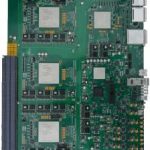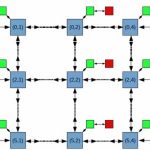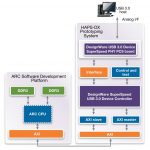Aldec has offered front-end EDA tools for over 30 years but may not be a familiar name to mainstream IC design engineers. That’s probably because for most that period they haven’t really targeted IC design. They have been much more focused on PC-based design for FPGAs particularly where requirements traceability has been important,… Read More
Tag: prototyping
Case study illustrates 171x speed up using SCE-MI
As SoC design size and complexity increases, simulation alone falls farther and farther behind, even with massive cloud farms of compute resources. Hardware acceleration of simulation is becoming a must-have for many teams, but means more than just providing emulation… Read More
ARM sets up quagmire-free ecosystem for IoT
Wandering around DAC this week, I found much of the discussion focused on the EDA community being at an inflection point. How do we get more design starts from new places with new ideas without jeopardizing existing business? It’s not as simple a transition as it sounds.… Read More
Fast Track to a reconfigurable ASIC design
Licensing IP can be a pain, especially when the vendor’s business model has front-loaded costs to get started. Without an easy way to evaluate IP, justifying a purchase may be tough. With more mid-volume starts coming for the IoT, wearables, automotive, and other application segments, it’s a growing concern. Flex… Read More
What’s the Difference between Emulation and Prototyping?
Increasing system complexity requires constant focus on the optimal verification methodology. Verification environments incorporate a mix of: transaction-based stimulus and response monitors, (pseudo-)random testcase generation, and ultimately, system firmware and software. RTL statement and assertion coverage… Read More
Taking a Leap Forward to Prototype Billion Gate Designs
It’s very common these days to hear about a billion gates SoC, but not without a huge design and verification effort and investment of resources. A complete verification of such an SoC needs several verification steps including software and hardware based methodologies that often are not sufficient to cover the whole SoC. In order… Read More
Breaking the SoC lab walls
There used to be this thing called the “computer lab”, with glowing rows of terminals connected to a mainframe or minicomputer. Computers required a lot of care and feeding, with massive cooling and power requirements. Microprocessors and personal computers appeared in the 1970s, with much smaller and less expensive machines… Read More
S2C eyeing 1B gate FPGA-based prototypes
We hear a lot about FPGA-based prototyping hardware: Aldec, Dini Group, PRO DESIGN, Synopsys, and others. So, why is today’s news on a new platform from S2C important? It’s a matter of intent, beyond the act of gluing a few large FPGAs on a board for customers to dump more and more prospective RTL into.
Size differences aside, each … Read More
Xilinx ships the VU440 and its 4M logic cells
Xilinx has delivered not only “the biggest FPGA on the planet”, but what it claims is currently the world’s largest integrated circuit: the Virtex UltraScale VU440, with 19 billion transistors fabbed in TSMC 20nm. The list of first customers to receive parts says a lot about the state of SoC design today, and the vital role FPGA-based… Read More
Prototyping Kits to Accelerate IP Development & Integration into SoCs
With growing SoC size, complexity, software and hardware content in it and shrinking time-to-market, the SoC design completion in time has become increasingly dependent on IP which need to be sourced (internally or externally), customized according to the design need and integrated together into the SoC. While IP providers… Read More





